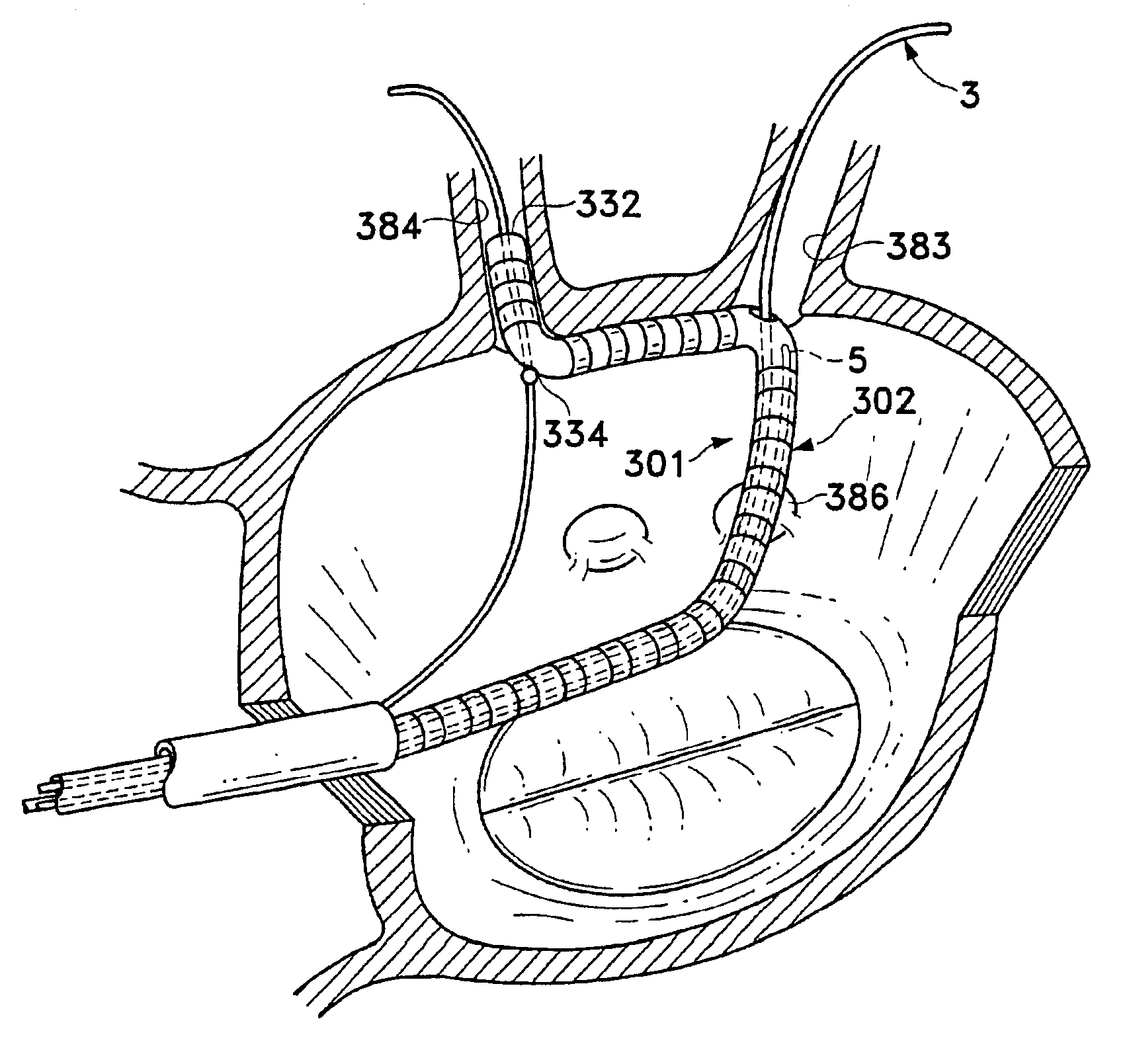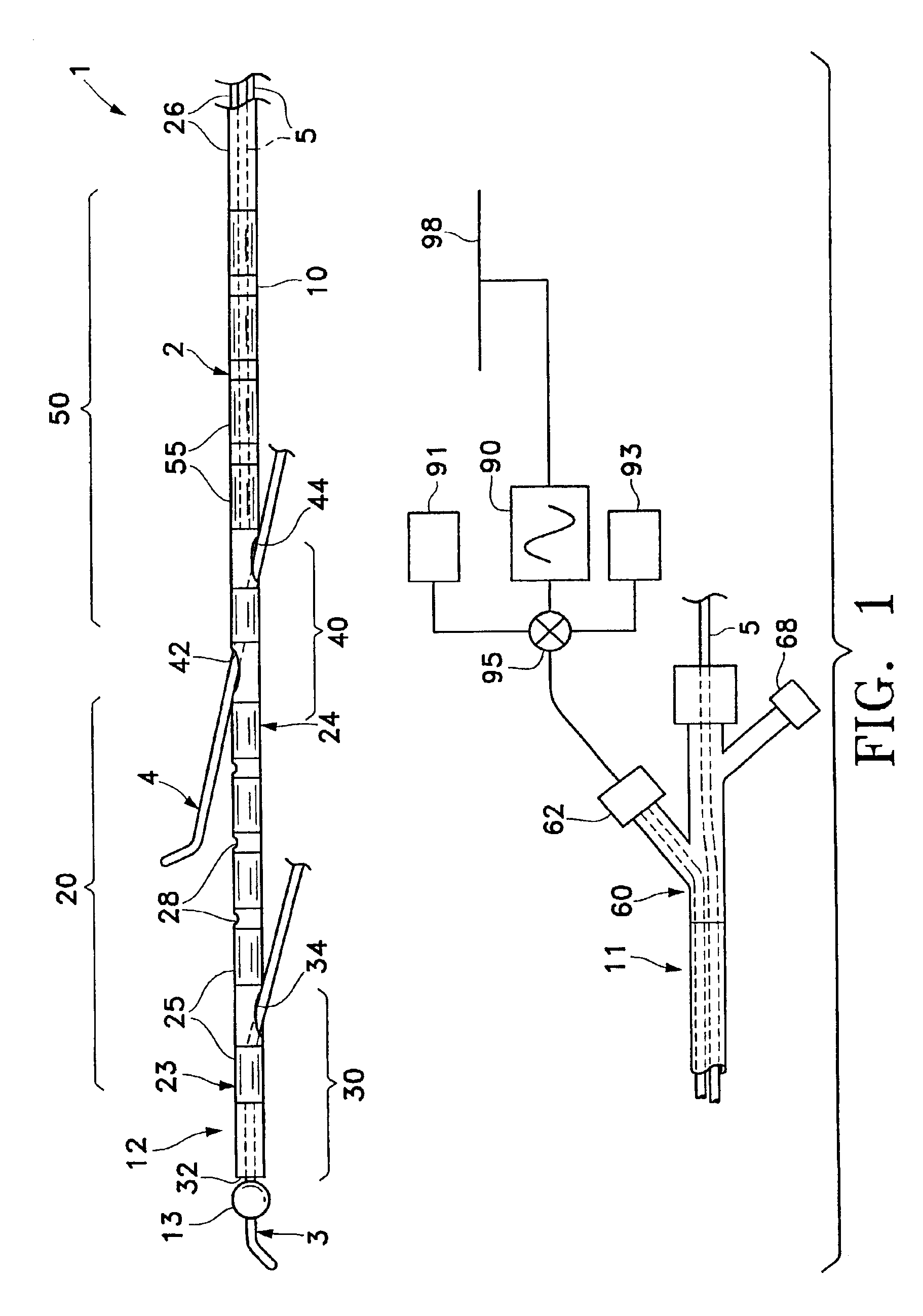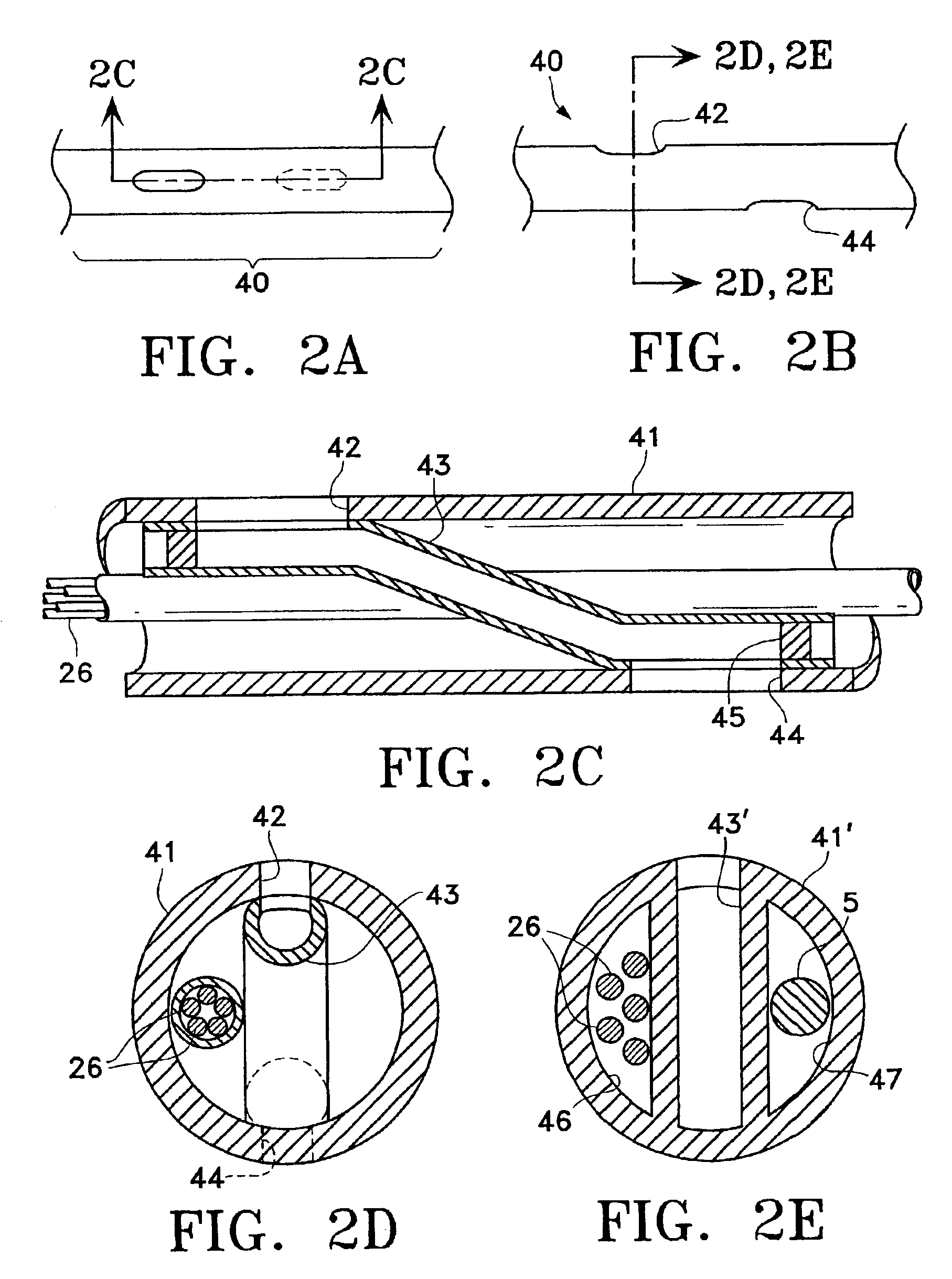Tissue ablation device and method of use
- Summary
- Abstract
- Description
- Claims
- Application Information
AI Technical Summary
Benefits of technology
Problems solved by technology
Method used
Image
Examples
Embodiment Construction
The present invention is herein described by reference to particularly desirable embodiments shown in the figures. However, the present invention broadly provides an elongate ablation element with anchors at multiple regions of that element, such as at each of its ends, which allow those ends to be secured at predetermined locations along a body space wall, such as along an atrial wall. In this novel arrangement, the ablation element is adapted to firmly contact a continuous length of tissue along the body space wall between the predetermined locations to form a long linear lesion in that tissue.
The term “anchor” is herein intended to mean an element which is at least in part located in an anchoring region of the device and which is adapted to secure that region at a predetermined location along a body space wall. As such, “anchor” is intended to provide fixation as a securing means over and above a mere normal force against a single tissue surface which is created by confronting co...
PUM
 Login to View More
Login to View More Abstract
Description
Claims
Application Information
 Login to View More
Login to View More - R&D
- Intellectual Property
- Life Sciences
- Materials
- Tech Scout
- Unparalleled Data Quality
- Higher Quality Content
- 60% Fewer Hallucinations
Browse by: Latest US Patents, China's latest patents, Technical Efficacy Thesaurus, Application Domain, Technology Topic, Popular Technical Reports.
© 2025 PatSnap. All rights reserved.Legal|Privacy policy|Modern Slavery Act Transparency Statement|Sitemap|About US| Contact US: help@patsnap.com



